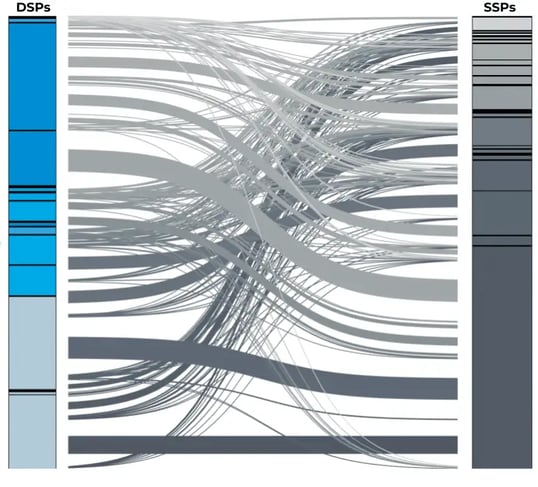Breaking Down the Ad Tech Supply Chain
May 15, 2022
Editorial Policy
All of our content is generated by subject matter experts with years of ad tech experience and structured by writers and educators for ease of use and digestibility. Learn more about our rigorous interview, content production and review process here.

Key Points
- The ad tech supply chain is incredibly complex, and growing more complex by the day.
- There are an almost endless number of paths an ad can take from advertiser to publisher.
- The RAMP Platform identifies, on a per-impression basis, the ideal path to maximize publisher revenue.
-- Article Continues Below --
The Complete Publisher Ad Tech Stack: Everything You Need to Know
The Ad Tech Supply Chain
In order to get from an advertiser to a publisher, a programmatic ad has to travel an awfully long way, through a surprising number of waystations.
Step 1: An advertiser begins either by working with an agency to submit ads through a demand side platform (DSP) or by managing campaigns directly through a DSP.
What is a DSP?
DSPs are platforms that connect advertisers with valuable digital ad impressions. Advertisers can submit their ad creative to the DSP and use the platform to purchase impressions with websites, apps, over-the-top (OTT) channels, and more.
Step 2: DSPs then connect to ad exchanges, open marketplaces where buyers and sellers can transact, swapping ads for open ad inventory.
What is an Ad Exchange?
Ad exchanges are large digital marketplaces where publishers sell their digital ad inventory to media buyers (advertisers) - it's sort of like a stock exchange but for ads. Most of these sales occur via real-time bidding (RTB) auctions. In other words, the buying and selling of ad inventory on ad exchanges is done programmatically.
Step 3: On the other side of the exchange lives a Supply Side Platform, or SSP (although as the ad tech industry consolidates, many exchanges have become rolled into SSPs).
What is an SSP?
A vital piece of ad tech, an SSP is a platform that allows publishers like you to sell their inventory - the available places advertisers can run their ads on your site or app - across multiple advertising exchanges.
Step 4: Publishers then transact directly with SSPs to fill ad inventory on their website or app.
Exploding Complexity
Now, consider that flow, which doesn’t seem exceedingly complex, but with multiple companies at each step.

There are upwards of 50 different SSPs publishers can connect with to get access to demand. And then there are 10-15 DSPs that those SSPs may connect to… And millions of advertisers on the other side of that.
At which point, you end up with a graph of growing complexity:

Ultimately what happens is that there are nearly endless possibilities for the path an ad can take from advertiser to publisher. Just take a look at this graphic from Human, previously known as clean.io, showing the sheer number of paths an ad can take just between the SSP and DSP steps:

And this doesn’t even scratch on the surface of the level of complexity a publisher must put up with to integrate and manage demand sources, should they choose to incorporate multiple (and you should, so long as you also prioritize quality).
To truly maximize ad revenue, publishers need to incorporate demand sources that will drive higher competition between each source. Just to make things even more complex, publishers will then want to make the most of the plethora of individual settings you have access to on each SSP which can further maximize your revenue.
But as you can see from the explosion of complexity already to this point, doing so becomes nearly impossible for a human-based team.
Supply Path Optimization
It's no wonder, with this level of complexity, and the sheer number of redundant paths an ad can take, that supply path optimization has become a hot topic in the ad tech industry.
Supply path optimization seeks to reduce the number of different paths the same ad can take from advertiser to publisher and simplify the whole chain. And, while this is a valiant effort, it doesn’t necessarily solve for the publisher.
RAMP: Selecting the Right Path for the Publisher
At the end of the day, selecting a path that maximizes the ultimate payout to the publisher is what Playwire, and the RAMP® Platform, is focused on.
With the most comprehensive set of demand sources on the market, RAMP® simplifies the effort required to drive demand from the plethora of available sources.
Then, on a per-impression basis, Revenue Intelligence® manages the myriad settings available in each demand side platform, making decisions based on thousands of variables and user data points, maximizing your revenue on every impression.
RAMP® is here to simplify the complex ad tech supply chain, and maximize benefits for publishers.

-1.png?width=800&height=157&name=1-playwire-logo-primary-2021%20(1)-1.png)




